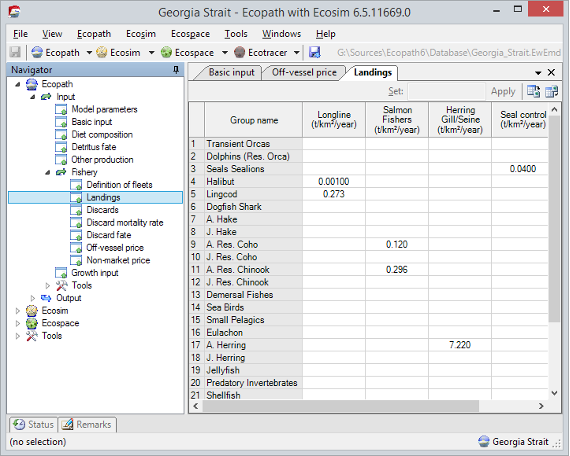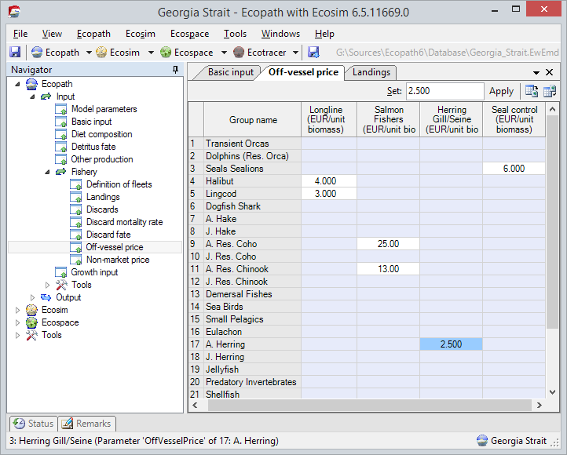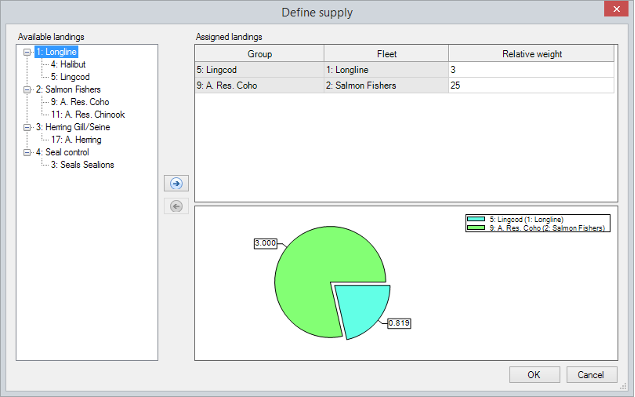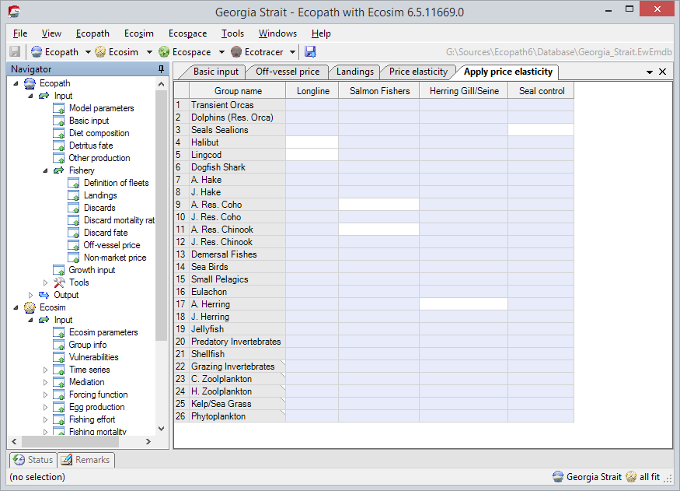Price Elasticity
Jeroen Steenbeek
We have implemented price elasticity in Ecosim as outlined in this chapter. For background descriptions of how EwE is implemented in EwE please see the Ecosystem Modelling with EwE textbook.
Elasticity is based on landings (Figure 1) and off-vessel price (Figure 2).


Users configure price elasticity through the Ecosim > Price Elasticity node in the navigation tree (Figure 3). In this form users define elasticity curves or ‘shapes’, and use these shapes to determine how (combinations of) landings affect the price of a given landing.
The procedure is as follows:
- Define one or more price elasticity mediation curves, or bluntly called ‘shapes’ in EwE. As with every shape interface in EwE, users can alter the contour of shapes by sketching with a mouse, by Copy / Pasting values into the Values interface, or by selecting a mathematical primitive in the Change Shape interface. The result is always stunning (Figure 3).The dashed blue line can be moved with the mouse cursor, and indicates the mediation baseline point – the point where the price equals the Ecopath base value.

- Select the supply to drive the prices via a mediation curve. To do so, select a curve in the price elasticity interface and press Define Supply. This opens – surprisingly – the EwE Define Supply form (Figure 4). Here, one or more landings (supplies) can be assigned and weighted to drive the prices using the selected curve.Select an available landing and press the arrow that points right. The landing is added as a price driver with a relative weight equal to the off-vessel price of that landing. The weights can be modified.The pie chart shows the weighted landed amounts, and thus provides a graphical overview how each landing contributes to overall price elasticity. The pie segments obtain the colour from the landed group.

- Once the Define supply form is closed, the main Price elasticity form will update to display supply assigned to the selected shape when the shape is selected. The shape itself will display the weighted supply total at the Ecopath mediation base line point (Figure 5, dotted blue line). Now, the supply must be applied to a landing to drive price elasticity. This is done via the Apply Price Elasticity node in the navigation tree, which opens the form shown in Figure 6.


- To apply price elasticity to a landing (i.e gear – functional group combination), now click a landing in the Apply price elasticity interface and select a supply curve that was configured in the previous steps.
Elasticity is now applied and used throughout EwE.
Note, however, that EwE does not yet have an explicit way to show how prices change. EwE will need this functionality, both in a plot that shows changing off-vessel prices, and written to CSV file when Ecosim auto-saves information. Let us know if you need it badly …

